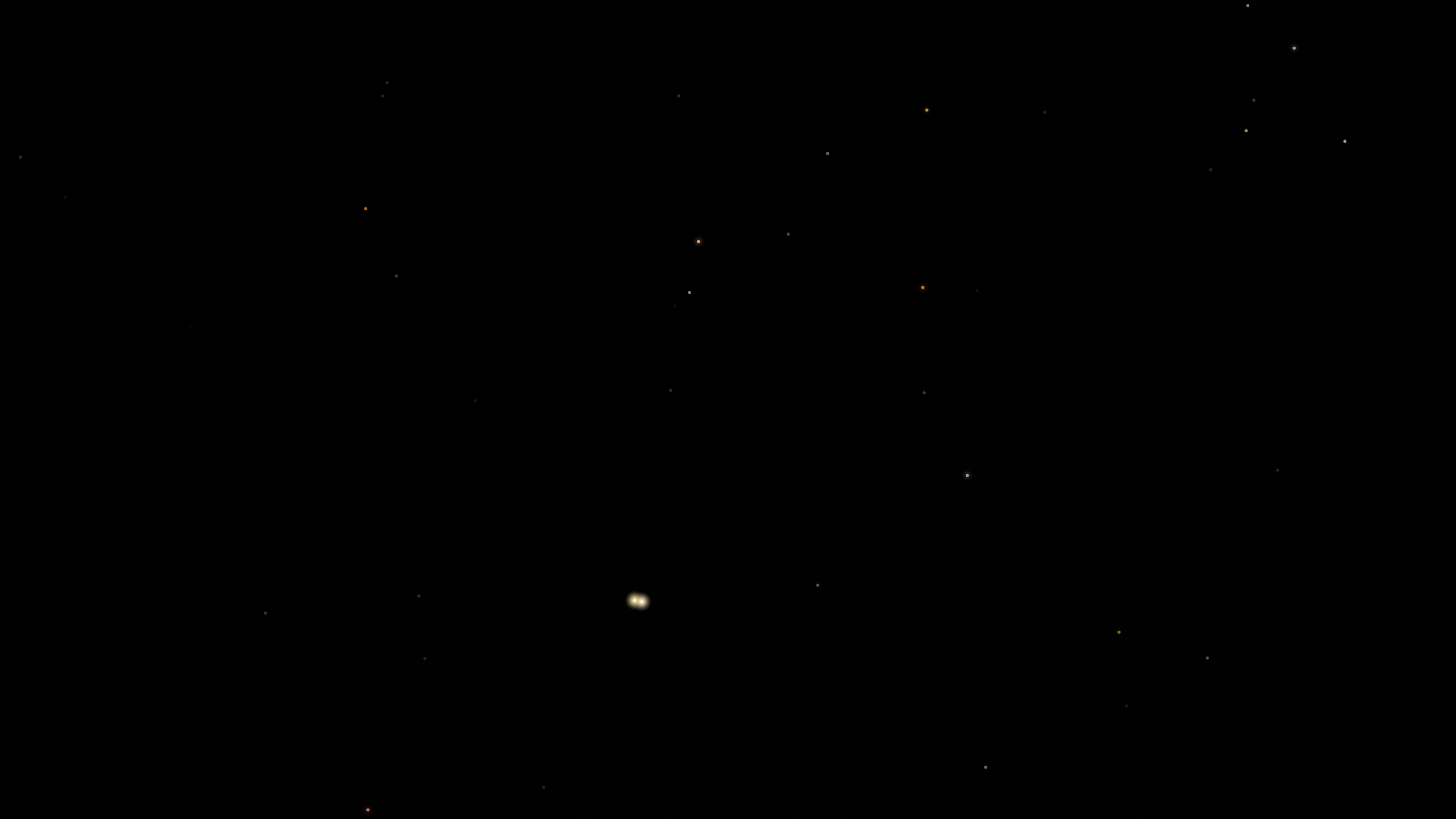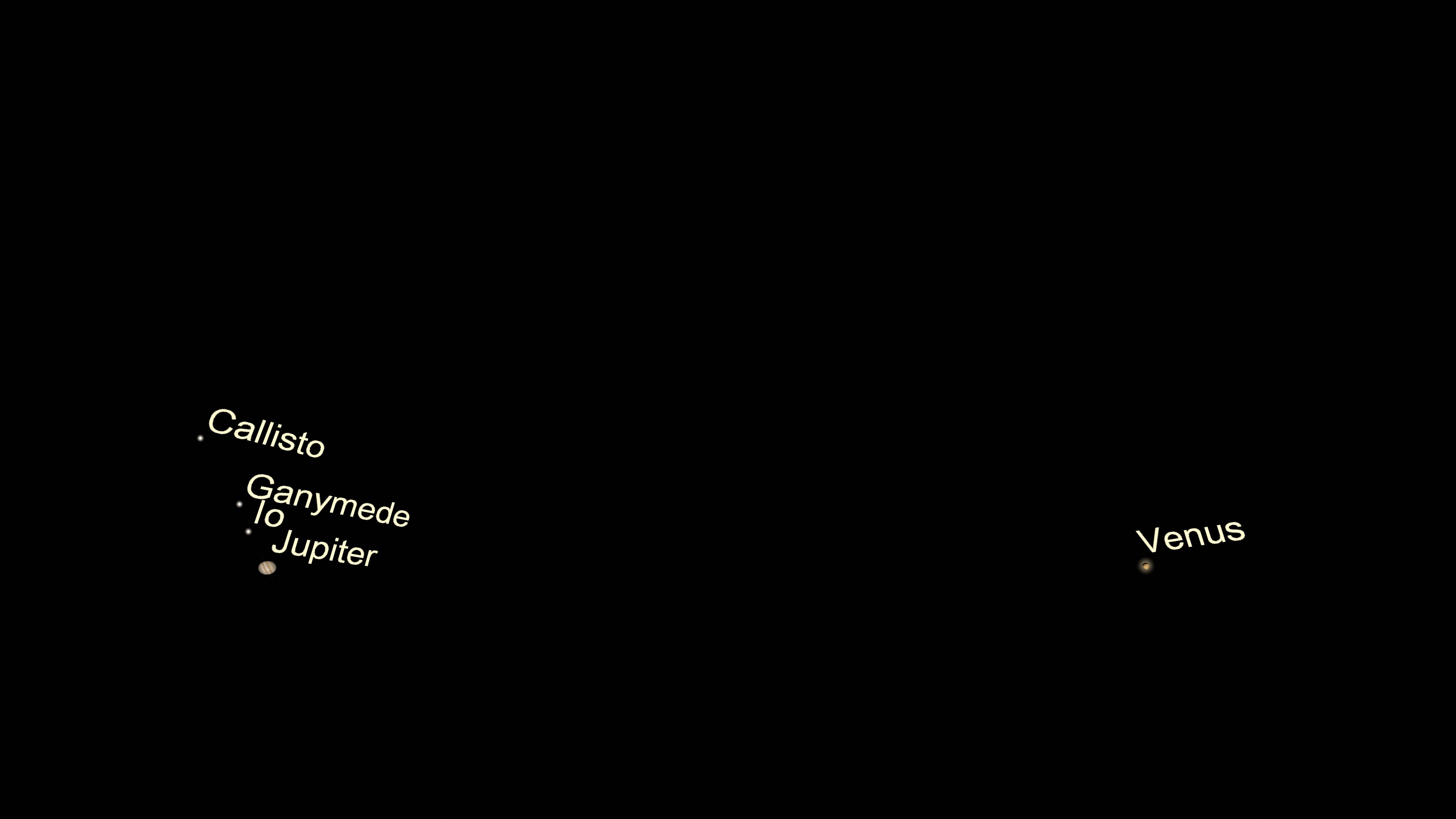Watch Venus as it approaches the king planet, Jupiter. Over the next few weeks, Jupiter and Venus will move closer together each night until they reach conjunction on March 1. Both planets are shining brightly in the western sky after sunset.

Venus and Jupiter appear in the same part of the sky 1.5 hours after sunset on March 1, 2023.
On March 1, Venus will meet up with the gas giant Jupiter in an event known as a conjunction. This close conjunction will bring the planets 32 arcminutes, about half a degree, apart. We’ll be viewing the event through our telescopes in a special Observatory Open House if the skies are clear.
We can view Venus’ gibbous phase and three of the four Galilean moons orbiting Jupiter through a telescope. If the seeing is good, we may even spot the cloud bands on Jupiter. Seeing is an astronomical term that describes the turbulence of air. Good seeing allows us to see fine details on the planets and occurs when the atmosphere is relatively calm. Poor seeing makes the planets appear blurry, making details harder to see.

Venus and Jupiter at 200x magnification to simulate the view through a telescope.
Conjunctions occur when two or more planets appear in the same part of the sky as either a single bright point or two points very close together. They occur because nothing in the universe is stationary. We’re all moving! As the planets orbit the Sun, some faster and some slower, they sometimes appear to be chasing one another. Venus seems to move quickly in the sky compared to the more distant planets like Jupiter and Saturn. A few weeks ago, Venus passed by the ringed giant Saturn and the ice giant Neptune!
You can experience the conjunction on your own by looking to the west an hour after sunset. The pair will set around 8 pm. Telescopes and binoculars are not necessary to view conjunctions, but they enhance the view! If you miss their closest approach on the 1st, you will still be able to see them close together for a few nights before and after.
Venus will be easy to spot after sunset shining at magnitude -4, while Jupiter shines at -2.1 magnitude, slightly up and to the left of Venus. Remember, apparent brightness, which astronomers measure as apparent magnitude, is reverse logarithmic. The brighter the star or planet is, the lower its magnitude number.